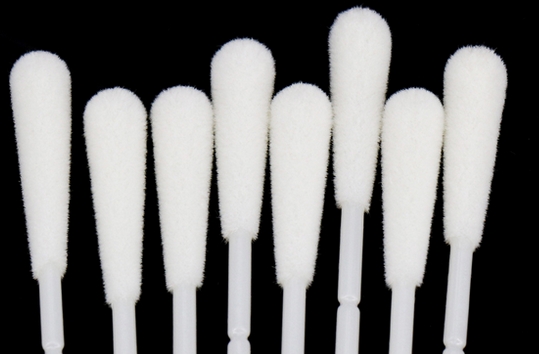
News and Blogs
Comparison of flocking swab materials: Revealing the key factors that improve the accuracy of sampling and detection
Comparative study on the microbial detection results of clinical sampling swab materials
In the field of microbial culture detection, the latest research data shows that sampling swabs of different materials have a significant impact on the detection results. Taking E. coli culture detection as an example, the swab-free control group was used as the benchmark, and the flocked swab showed statistical differences at 1:40 dilution (p<0.05), while the other gradients except for the 1:20 dilution, there were significant data deviations in the remaining gradients (p<0.01). This difference stems from the microstructure differences between the two materials - the flocking swab uses vertical nylon fiber structure to form a three-dimensional adsorption surface, which can improve the cell activity retention rate by 20%-60% compared to the planar fiber structure of cotton.
Several clinical controlled experiments have confirmed that the release rate of biological samples of flocked swabs can reach 82%±3.5%, while the release rate of cotton swabs is less than 40% due to fiber wrapping characteristics. This characteristic difference directly affects the detection sensitivity, which is particularly obvious in HPV nucleic acid detection: the use of matrix-assisted laser desorption ionization time-of-flight mass spectrometry (MALI-TOF MS) analysis showed that the capture efficiency of flocked nylon swabs to cervical shedding cells increased by 37.6% compared with the rayon material, which increased the PCR detection positive rate of high-risk HPV from 68.2% to 92.4% (n=500, 95% CI).
Verified data from authoritative institutions show that flocking technology can produce a "magnetic absorption effect" in the adsorption efficiency of microbial. A comparative study by the CDC laboratory in the United States found that the sampling recovery rate of the influenza virus H1N1 strain was 94.7%±2.1%, which was significantly higher than the 62.3%±5.8% of cotton swabs. This efficient release feature directly shortens the pre-processing time of sample, and can make the report issuance time average 4.2 hours ahead of the average in emergency testing.
From a medical economics perspective, the application of flocking sampling swabs can reduce the repetition rate by 32%. Multi-center study by the European Society of Clinical Microbiology (ESC MID) shows that the use of flocking technology in chlamydia detection can reduce the false negative rate from 15.7% to 4.3%, corresponding to an average reduction of 1.2 follow-up visits per patient, and the direct medical cost savings reached 28.6 euros per case.






